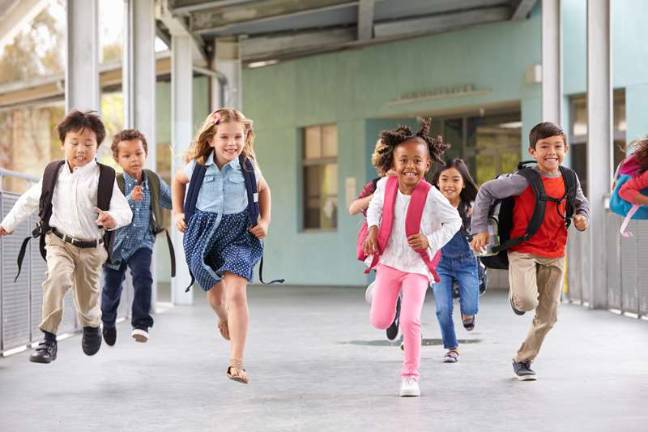Active kids achieve in the classroom

It's no surprise that schoolchildren, like adults, are getting more sedentary. But this trend has consequences beyond the health problems that go along with being overweight or out of shape. Kids who don't move don't learn as well as those who do. Numerous recent studies have found that the very structure and function of the growing brain depends on vigorous physical activity – more than the usual 20 minutes of recess offered by those schools that still offer recess.
“Children who are more active show greater attention, have faster cognitive processing speed, and perform better on standardized academic tests than children who are less active,” says the National Academies of Science, Engineering and Medicine.
This puts an extra demand on schools, where the people who are growing brains spend most of their day. At the same time, schools have been tasked with getting their students to be more competitive on standardized tests — a very sedentary business indeed. Memorizing formulas, writing essays, and reading textbooks may give brains a workout but do little to strengthen hearts and lungs, which keep brains healthy.
Matt O'Brien, athletic director at the Goshen Central School District in Goshen, NY, is now completing his doctoral dissertation on the link between academic achievement and physical activity among high school students in New York State.
“There's a ton of research that suggests that the more kids are active, the better they do in the classroom,” he said.
Most neuroscientists acknowledge the link, which came to light about 20 years ago. And the evidence has now reached a “groundswell,” according to Eric Jensen, author of “Teaching with the Brain in Mind.” Recent research has found that the area of the brain most associated with motor control, the cerebellum, has a direct pathway to the part of the brain involved in memory. “Amazingly, the part of the brain that processes movement is the same part of the brain that processes learning,” Jensen writes. All kinds of movement — whether play, recess, or physical education — improve not only physical and mental fitness, but social interactions as well.
Rolando Aguilar, athletic director at the Chester schools in Chester, N.Y., said his district acknowledges the importance of physical activity “on cognitive skills, attitudes and academic behavior.”
“Exercise may affect executive functioning with increased oxygen flow to the brain and increased brain neurotransmitters,” he said.
He suggested some creative ways to nurture the connection. “Jogging in place always works,” as a way for classroom teachers to get their students moving. He also recommends meditation and jumping jacks.
Some Chester teachers already incorporate movement into their classrooms.
“I have observed some teachers having students going to station to station, let's say every 10 minutes, and rotate to the next station,” said Aguilar. “Students get up from their chairs and get to move around in class. Some teachers have lessons in which they have students working together and standing by a presentation and they think pair share and have a discussion, again they would rotate to another part of the classroom.”
In Chester's Health/Bio classes, students review respiration, pulse, and heart rate. And they can move around.
“With our Chromebook initiative, our kids can walk around the class and move freely,” said Aguilar.
But, such creative solutions aside, schools find themselves strapped for time and money. School budgets aren't keeping up with the neuroscience.
“There's a lot of pressure coming from state and federal legislation as far as performance of schools,” O'Brien said, referring to standards like English language arts and STEM subjects. “Also what we've seen recently is that many schools have budgetary constraints and in that unfortunate situation they have to cut programs that are nonessential and often times that's art or sports because they have to maintain as much of their core academics as possible. Yet, as we know, studies show that those extracurricular activities often boost the performance of these academics.”